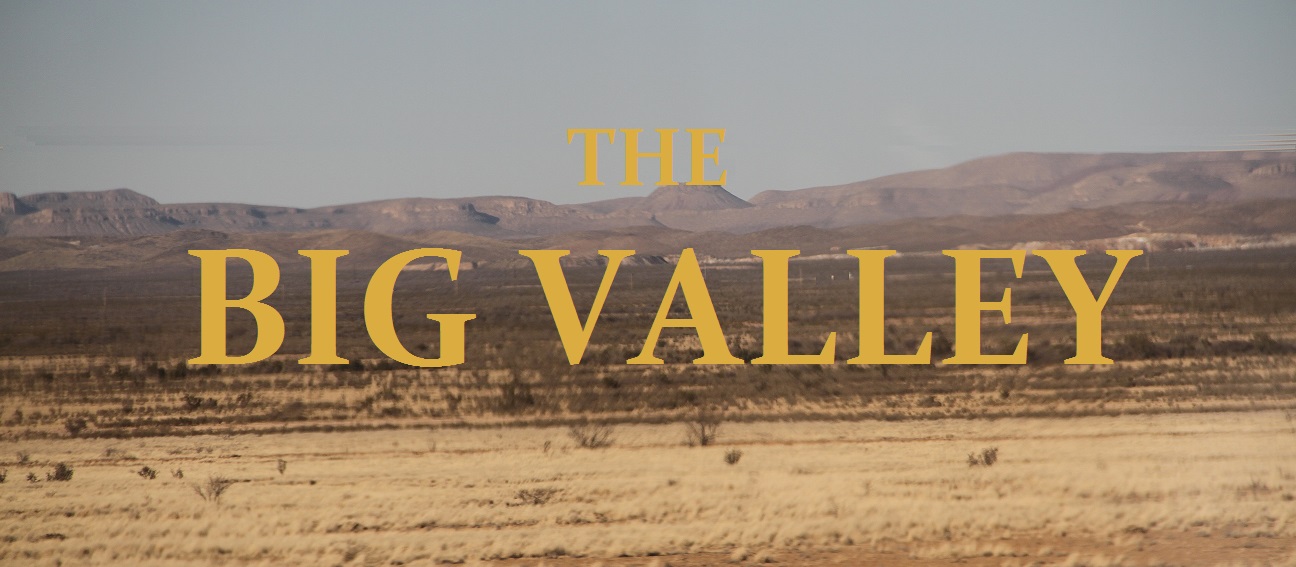The family and events portrayed in The Big Valley are loosely based upon the lives of the owners of the Hill Ranch of Calaveras County, California in the United States of America.
Hugh Lawson White Hill, the patriarch, was born in Warren County, Tennessee, United States of America on either February 12 or 22 in 1826. He was called “Lawson.” His parents were Elenor Hyman Hill (nee Morgan) and Ervin Hill. He was probably named after his uncle.
Lawson married his first cousin, Euphemia Ann Hill, the daughter of Cornelia Smart and Jessee Pleasant Hill (Ervin Hill’s brother), in either 1849 or 1850 in Warren County, Tennessee, USA. They moved to Myatt, Lawrence County, Arkansas, United States of America where their son, Jesse Jerome Hill, was born in 1850.
In 1855, Lawson, his wife Euphemia, son Jesse, and Pleasant Henderson Hill (Euphemia’s half-brother) established a 1000 acre ranch near the town of Camanche (Originally the town was named Limerick. The name change occurred in 1849) in Calaveras County, California, United States of America. The Mokelumne River ran through the ranch.
Ranches in Calaveras County produced both lifestock and agricultural products. It was stated by Euphemia’s great-nephew, Pleasant Henderson Hill III, that in 1861 Lawson was adding a pig farm to his holdings.
Euphemia and Lawson added two more sons, John H. Hill in 1855 and Francis Irving (called “Irving”) in 1857, to the family.
Legend suggests that Lawson was shot by Marion Tate, a farm laborer on the Hill Ranch (as listed on the 1860 Census – Calaveras County, California), who was accused by Lawson of having an affair with Euphemia and of taking her to the courthouse to file for divorce. Euphemia did indeed file for divorce on May 12th in 1861, the same day Tate shot Lawson, but was possibly taken there by a neighbor. It is reported that Lawson, in a drunken rage, accused Tate of alienating his wife’s affection. In response, Tate shot Lawson. Tate’s actions were deemed self-defense on May 13th in 1861. This finding was disputed by Pleasant H. Hill III (grandson of Pleasant H. Hill) in an interview with The Record, a newspaper in Stockton. In that interview, Mr. Hill asserted that it was Tate that started it.
Lawson’s grave is in the Pioneer Cemetery in San Andreas, Calaveras County, California, United States of America (a cemetery 2 miles south of San Andreas on the south side of Highway 12). The inscription reads:
“Remember me as you pass by, as you are now, so once was I, as I am now you soon will be, prepare for death and follow me.”
This is a familiar inscription found on headstones in the southern United States and may be part of a larger poem:
O ye gay, ye young and proud,
You must die and wear a shroud;
Time will rob you of your bloom,
Death will sink you to the tomb.
Farewell vain world, I’m going home,
Jesus has smiled and bid me come,
Sweet angels beckon me away
To sing God’s praise in endless day.
Oh where is sister now, our sister dear,
Your home to mansions bright and fair,
No more she’ll shed the bitter tear,
She’s happy in her mansions there,
Farewell, I bid you all adieu.
How often have you looked for me,
And often seen me come,
But I must depart and never return.
Remember me as you pass by,
As you are now, so once was I,
As I am now you soon will be,
Prepare for death and follow me.
Upon Lawson’s death, at the early age of 35 years, his widow Euphemia, herself only 31, became the matriarch of the Hill family and owner of the Hill Ranch. As time went on, she was referred to as “Auntie Hill” by the townspeople.
Jesse Jerome died at age 25 in 1874. John H. died the following year (1875) at a young 19 years of age. They were originally buried in the Dorsey-Holman-Ostermann Cemetery in Camanche (The creation of the Camanche Reservoir (see below) required their reinterment in February of 1962 in the Lodi Memorial Cemetery in Lodi, San Joaquin County, California, United States of America).
Euphemia went into partnership with G.N. Milco to grow Chrysanthemum cinerariaefolim (commonly referred to as “pyrethrum”) on the ranch. The flowers were ground to make buhach and sold as Milco’s Universal Insect Exterminator. After the conclusion of the partnership, Euphemia continued to produce the product.
Euphemia survived until November 26, 1910, living to 81 years of age. Irving, who had continued to live on the Hill Ranch with his mother, lived to be 74 or 75 (dying in 1932). Euphemia and Irving were originally buried in the family cemetery on the ranch, but were also reinterred in the Lodi Memorial Cemetery in Lodi, San Joaquin County, California, United States of America due to the construction of the Camanche Reservoir. There is also a memorial marker for Lawson next to Euphemia’s grave.
The Hill Ranch ceased operation in 1931. In 1963, the Camanche Reservoir was completed. As it filled, it covered the Hill Ranch and the towns of Camanche, Lancha Plana and Poverty Bar.
Sources:
Dreaming Casually Poetry Blogspot
Sterling, Robin, (February, 2015), Marion County, Alabama Newspaper Clippings, 1902 – 1904, Morrisville, North Carolina, United States of America, Lulu Press, Inc., retrieved from books.google.com, available from Lulu.com

